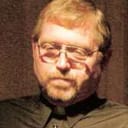Stay in the Loop
BSR publishes on a weekly schedule, with an email newsletter every Wednesday and Thursday morning. There’s no paywall, and subscribing is always free.
Preserving more than just pioneering science
Science and Survival at the Science History Institute

Recently, the Science History Institute opened a unique outdoor exhibition called Science and Survival, which tells the story of Jewish German father-and-son chemists Georg and Max Bredig and of their family’s struggle to escape the terror of the Third Reich. The exhibition consists of enlarged reproductions from a recently digitized collection of papers, documents, telegrams, and the like from the Bredig family archives. It’s installed on the facade of the Institute’s headquarters building in Old City.
Good chemistry
Georg (1868-1944) was a pioneering scientist in the field of physical chemistry. He held a number of prominent academic positions in Germany until the Nazis ended his career in 1933. The exhibition’s pre-1933 materials include extensive correspondence with a number of Nobel laureates in chemistry and physics, including Neils Bohr, Max Planck, and Harold Urey.
The post-1933 papers illuminate in extraordinary detail how the Bredig family tapped into their scientific network in an attempt to escape Nazi-occupied Europe. The exhibition documents how that scientific network morphed into a web of personal connections that helped ensure the family's survival.
The first family member to escape the Nazis was Georg’s son Max (1902-1977), also a chemist, who left for the United States in 1937. Georg and other family members remained in Germany at first, not arriving in New York City until 1939.
Such documentation as presented in Science and Survival is rare. Many archival collections of Jewish scientists were seized and destroyed by the Nazis during the Holocaust.
“It’s a story we have heard time and time again, but it’s a story we should continue to tell,” said Jocelyn McDaniel, research curator of the Bredig Project who has spent the last two years translating the collection.
“The Bredig family took great risks to ensure not only their own survival but also the preservation of Georg Bredig’s scientific accomplishments,” McDaniel said. “We’re grateful to the Bredig family for entrusting us to preserve and interpret these materials. The process of bearing witness to Holocaust memory is particularly significant in the 21st century as new generations are tasked with teaching about this harrowing time.”
Science and Survival is on open-ended display on the facade of the Science History Institute, accessible to the public 24/7. Admission to the Institute is free and open to the public Wednesday through Saturday, 10am to 5pm.
What, When, Where
Science and Survival. Through Spring 2023, at the Science History Institute, 315 Chestnut Street, Philadelphia. Free. (215) 925-2222 or sciencehistory.org.
Sign up for our newsletter
All of the week's new articles, all in one place. Sign up for the free weekly BSR newsletters, and don't miss a conversation.

 Gary L. Day
Gary L. Day